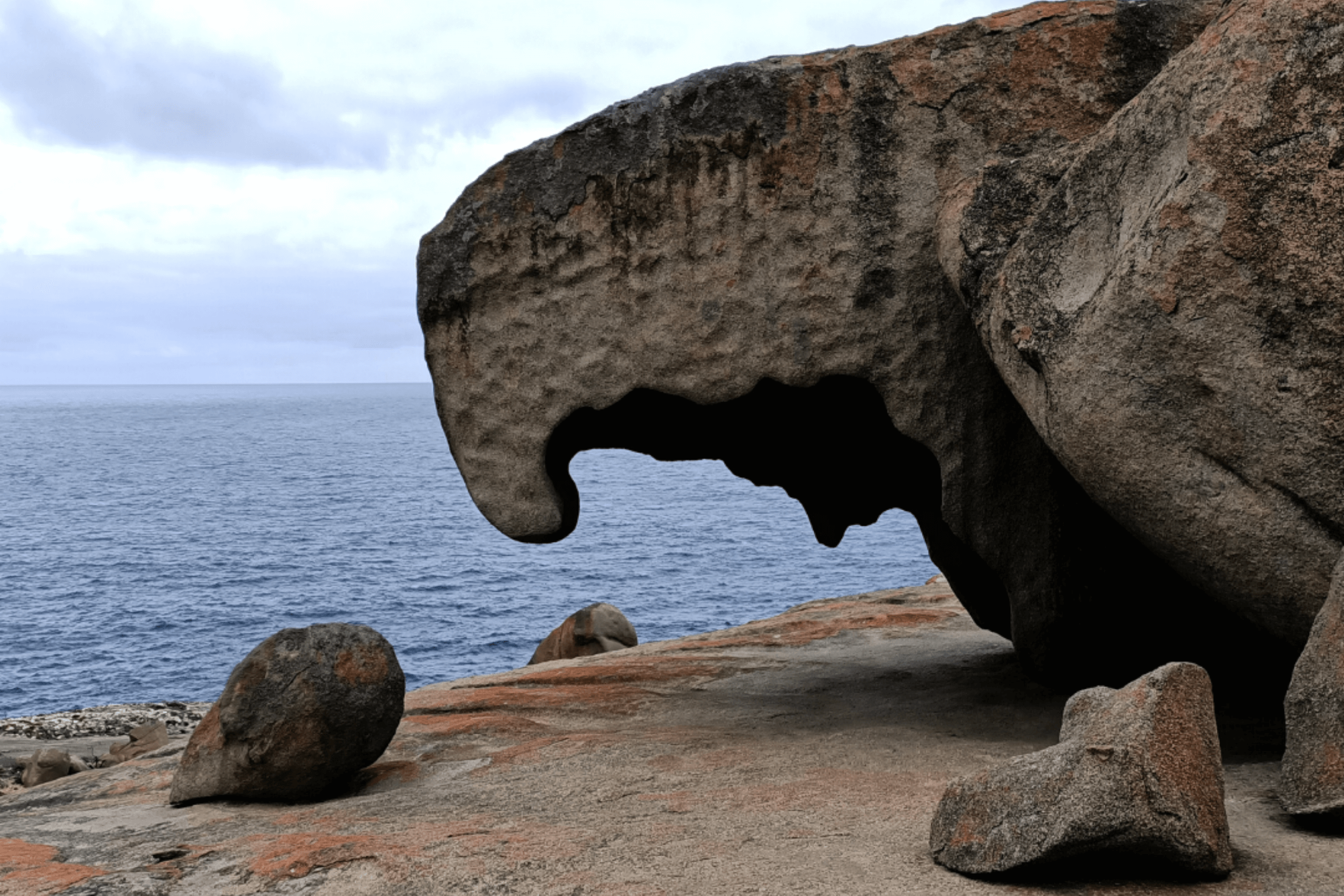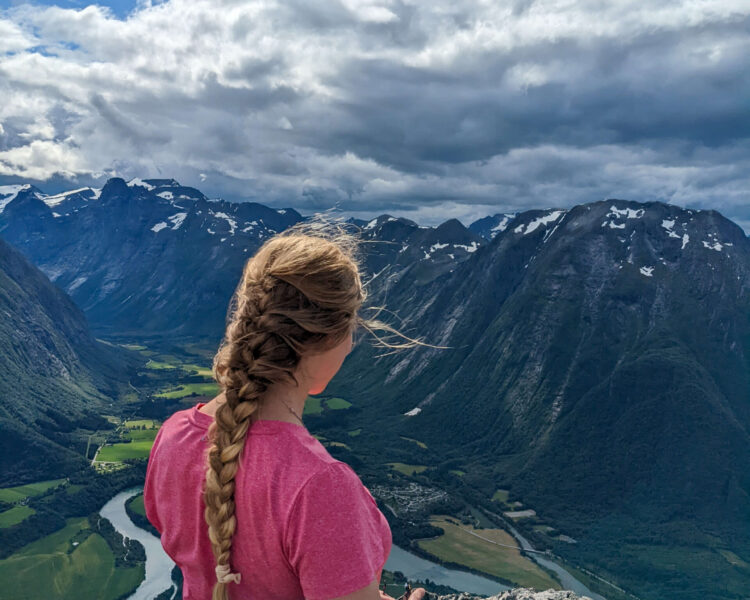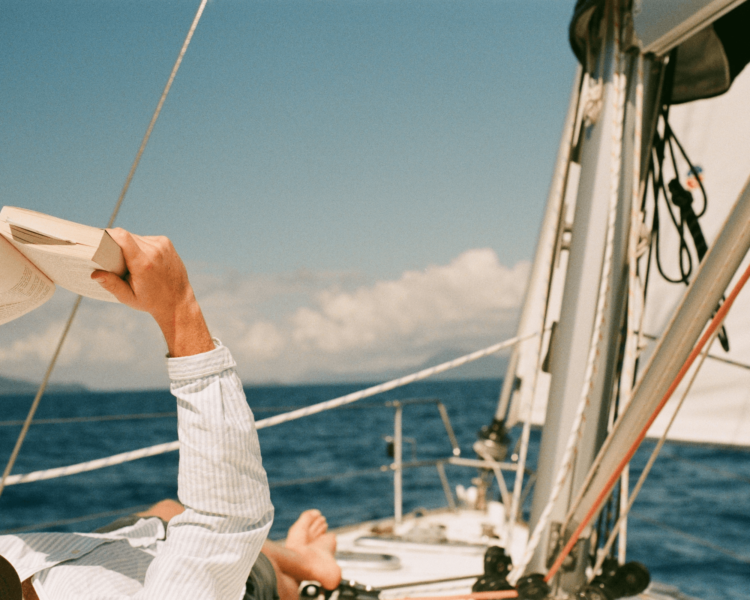When I stepped off the SeaLink Ferry in Penneshaw on the first Saturday of a brand-new year of 2021, one in a quiet huddle of locals and travellers, it was 8 o’clock in the evening, and the sky was throwing billowy cloud and blushing a soft pink.
Following the small crowd of passengers stretching their legs and buttoning up coats after the 40-minute journey across Backstairs Passage, I couldn’t help but admire the view; the twilight sky stretched across the sea and, in the distance, the hulking brown-red mainland of Australia stared back at me.
The 24-kilometre-wide stretch of land upon which I was standing was reportedly severed from the South Australian mainland an estimated 12,000 years ago; the choppy waters that I had just crossed to reach this delicate island is what had kept it so. Underdeveloped, and utterly charming, Kangaroo Island is home to birds, seals, echidnas and kangaroos, with many species found nowhere else in Australia or the world.
Here’s my guide to spending 5 days on Kangaroo Island.
.jpeg)
.jpeg)
DAY 1
Penneshaw Hotel
After my partner Nick had retrieved the campervan from the ferry and picked me up, we drove just up the road to the noticeably polished Penneshaw Hotel, which granted us an ocean view at almost every turn of the head. Well, such would have been the case, if we’d have booked in advance. Thanks to a last-minute call after we’d wondered about dinner while aboard the ferry, the only seats available were in the terrace. Still, my view included a smidgen of sea, some cacti, exposed brick walls, wine barrels, terrace doors, Nick, and copious other diners. Still beautiful, of course, but a warning to book in advance lest you miss out completely!
As I munched on freshly baked Bruschetta piled with mushrooms, I tried (and failed) not to eavesdrop on the bubbling group of women behind me who ostensibly, based on pitch and tone, had already enjoyed countless hours and beverages at the hotel: they loudly lamented their beautiful trip to Kangaroo Island, perhaps celebrating the possibility, if only slight, of travel again in a world slowly picking up the pieces after the year that was 2020.
As their trip, apparently, had wound to an end, mine had only just started to unfold, and I couldn’t wait to see what was waiting for me in the days ahead I had to explore this beautiful part of the country.
.jpeg)
Antechamber Bay
That night, as we parked our campervan at Antechamber Bay and snuggled deep into the covers of the kitchen-table-turned-double-bed, unexpectedly spacious and comfortable, I heard the sounds of the sea and the distant murmurs of other campers enjoying a barbecued sausage at 9.30 p.m., just as the last of the daylight was finally swept away and the wild Australian nightlife came out to play.
DAY 2
Cape Willoughby
After an instant coffee and a short stroll on the soft white sands of the secluded Antechamber Bay, following the unique foot and tail prints of a kangaroo’s earlier passage along the same, we drove to Cape Willoughby, where South Australia’s first ever lighthouse, constructed in 1852, still sits, perched atop bulging cliffs and overlooking Backstairs Passage.


When we arrived just after eight-thirty in the morning, not a soul was in sight. A car was parked in front of one of the lighthouse keeper’s heritage cottages, where one can stay from $170 per night; I imagined its owner still fast asleep within, snuggled under the duvet, protected by the stone fortress from the whipping ocean winds.
Our boots crunched on the gravel as we approached the accommodation’s office, where a sign advised us we were much too early for a lighthouse tour; the office was to open at ten; the first guided tour was to take place at 11. Not wanting to wait, we headed back to the van, taking a few snaps of the lighthouse, the swell of seagrass swaying in the wind, the orange lichen-coated rocks, and the sheer, craggy cliffs that fell to the frothy ocean hundreds of metres below. I could have believed I’d flown to Scotland, so reminiscent of such was the rugged landscape of this coast.
Dudley Wines
Our next stop was at Dudley Wines for a tasting. Thinking 11 a.m. an acceptable hour in which to introduce wine, at least when on holiday, we were nevertheless one of only two other couples settled with a tasting platter within the rustic, farmhouse-style cellar door.
The view from the balcony was spellbinding, framed beautifully by two neighbouring mountains, it stretched beyond the ocean to the Australian mainland.
Rainclouds were quick to engulf this view, but not before we’d had time to inhale our five wines with cheese, breadsticks, pickled capers, and dip.
Soon after lunch, the crowds joined us as did, again, the sun, followed by the gentle strums of an acoustic guitar; a musician had set up on the balcony, behind tables and chairs laden with chattering families and couples.

Prospect Hill
En route to our next destination, we made an impromptu stop at Prospect Hill, where 500 steps lead to Kangaroo Island’s highest point. Again, the view didn’t disappoint; we looked out over the magnificent cliffs of the misty coastline.
Emu Bay
We stayed the night at Emu Bay, after dinner with friends at their coastal, 80s-style home. Though still overcast, I could see the sand and the deep blue waters of the bay from their living room, twinkling at us over the few vacant lots from the coastline.
DAY 3
Emu Bay Lavender Farm
We woke the next morning with Emu Bay Lavender Farm our first stop for breakfast.
Though a quaint farm, its lavender was growing wildly, and rows and rows of soft purple and greens flanked a small cottage, in which we were soon seated for eggs, bacon and coffee. Once we had finished eating, I poked through the small gift shop and bought myself a lavender-scented candle. Then, after a photoshoot among the lavender (of course), we were off to Murray’s Lagoon for a hike.


Murray’s Lagoon
Again, not a soul was in sight as we trudged along the pebbled path of Bald Hill walk, which skirts the edge of Murray’s Lagoon, hoping to spot wildlife on our way. Four hours in, we were spooked by a pair of Kangaroos hiding in the tall grass just metres from us.
That evening, we said goodbye to Emu Bay to reach our next destination, incidentally, another sparkling blue bay and my personal favourite of the trip.
Vivonne Bay
At the still sunlit hour of 6 p.m. we found Vivonne Bay’s famous jetty, and, gathering the fishing rod, a bottle of Shiraz and a box of crackers, we spent the next few hours casting in turns, enjoying the enchanting bay, which lapped against the fine white sand of the crescent-moon shaped shore.
Though there were other cars parked in the lot, and a few boats bobbed in the bay around us, all else was quiet. I wondered about the owners of these cars on the shore, what lives did they lead when they weren’t parked here, exploring the ocean?
Soon, though, as the wind picked up and the daylight finally faded, other fisher people joined us on the jetty. With only a slight nod we acknowledged each other and I relished the silent camaraderie of us each coming together for the same purpose, though with an understanding that our lives had knocked together by chance, that we will each be nothing but a nameless face on a windy night to the other.
.jpeg)
DAY 4
Vivonne Bay (again)
I’d fallen in love with this beautiful bay. This early morning, as we approached the jetty once more, rods in tow, we noticed two dark shapes zipping through the clear water, soon revealing their whiskered snouts as they frolicked past us under the jetty: seals. This wasn’t a conservation park, and I was captivated, thrilled to be a witness to their private world, humbled once again by nature’s beauty.
Raptor Domain
Next on our itinerary was Raptor Domain, a wildlife refuge in Seal Bay just off the road of the same name. Nick had expressed a desire to see some native birds; evidently it was one he shared with many, many others, as the place was crawling with people. That said, it was a delight to see the tourists swell after all that the island had been through; first catastrophic fires, then COVID-19.
Though we were still in line as the 2.15 p.m. group filed in for the show, we managed to snag tickets in time and trailed the group through to the viewing area, a dome-like structure with seats that formed a ‘C’ around the stage.
After a short introduction from our host, and more rain, we were met with the quirky inhabitants of Raptor Domain: We met Donald, the Curlew, whose long, lanky body topped with a sickle-like beak moved its spindly legs delicately through the grass, as if every footfall was something to carefully consider. We met Maggie, the cheeky magpie who had learned to clean rubbish from the floor to the bin. We met Casper, a wide-eyed, snow-white barn owl who jumped to and from excited children’s knobbly knees. We also met 28-year-old Jedda, an enormous Wedge-tailed Eagle, who eyed us all with disdain.
.jpeg)
After Raptor Domain, we visited Seal Bay Conservation Park, which offered us the unique opportunity to see a sea lion colony lazing in the white sands via an 800-metre long coastline boardwalk.
Our wildlife adventures didn’t stop there, much to our surprise. On our way to Kangaroo Island’s town centre Parndana, we were drawn in by a worn sign just off Playford Highway that read ‘Kangaroo Island Wildlife Park’. Here, at the odd hour of 4 p.m, one before closing time and where the atmosphere was weary, having entertained over-excited children all day, we ducked in and enjoyed (astonishingly) close encounters with a range of native and exotic animals: koalas, kangaroos, meercats, cassowaries, penguins, more sullen wedge-tailed eagles, and even a marmot.
Parndana
At Parndana, we stopped at the local pub and I chewed through a deliciously cheesy parmy . Besides visiting the pub and a few small kiosks, where we grabbed an onion for tomorrow’s dinner, there wasn’t much else for us to do in the delightful Parndana at that time.
Before heading back to our campervan for the night, we made our third trip to Vivonne Bay, this time snuggled in our warm jackets and with torches as well as rods, as night had well and truly settled in by the time we parked by the shore.
As I dangled my legs over the jetty and the cool breeze snaked its way into my hoodie, despite my best efforts to keep it out, I noticed a dark grey figure gliding through the inky black waters below – a manta ray. I stood and followed it down the jetty, as it gracefully moved through the water that shimmered under the jetty lights, until it faded from view.
DAY 5
Flinders Chase National Park
Flinders Chase National Park covers the western edge of Kangaroo Island, and is arguably its most famous feature, home to two of its most recognised icons: Remarkable Rocks and Admirals Arch. Sadly, ferocious bushfires ripped through the region in December 2019, bringing it to international acclaim, as shocking video footage and photos reached news outlets across the western world.
Just recently reopening to tourists, and in need of their economic support to aid recovery efforts, the region beckoned. As we entered the park, I was pleasantly surprised to see green emerging from the fire-torn land, burgeoning around the base of burnt trees’ skeletal remains. The land was noticeably devoid of wildlife, though.
We stopped at the famous snaking Cape du Couedic Road in Flinders Chase National Park, which is normally almost submerged in vivid and bushy greens, but which now is a stark indicator of the bushfire’s destruction; one could clearly see the emancipated figure of the land.

.jpeg)
.png)
We went to Remarkable Rocks next, following the winding road until we could see the craggy cliffs of the coastline and then, in the distance, the magnificent geological feature perched piously on top.
Walking the boardwalk to the rocks, I noticed tufts of native shrubbery which had evidently escaped the fires’ fingertips. Signs warned us not to walk too close to the outcrop’s edge; I was more than happy to oblige. Peering down from my safe standing more than three metres from that sign, I could already see the whitewash of water clashing heavily on the rocky shore; in a battle that no human would ever win.
We took photos, gazed in awe at the aptly named, hundreds-of-millions-of-years-old granite boulders, skirted under their hollows and within their crevices and felt very small. Then, we gathered our awed gazes and cameras and hiked the short boardwalk back to the van, where we continued along the winding coastline path to Weirs Cove.
.jpeg)
.jpeg)

Weirs Cove
A storehouse completed in 1908 where the lightkeeper had lived with his family, Weirs Cove in its heyday was restocked only once every three months with supplies. How that feat was accomplished was through a deep gash in the cliffside, where a flying fox winching system, powered by horses, was constructed.
I looked at the storehouse’s ancient dock from above and stepped quietly through the remnants of the old cottage, trying to imagine what life would have been like as someone living here, looking out into the beautiful expanse of ocean, living without a visit for months at a time, winching people up the cliff’s edge with nought but horsepower. I wondered how they filled their days, how they worried after their children playing so close to the cliff’s edge, how they made their supplies last for so many months, how they weathered the loneliness they must have felt as the only people on that part of the island.
.jpeg)
Admirals Arch
Seals, and a pretty bad smell. Such was Admirals Arch this bright Wednesday afternoon we arrived at this spectacular rock formation, a sanctuary for New Zealand fur seals. Unfortunately, this area hadn’t seen a lot of rain lately; as nature’s flush for the seals’ excrement, rain acts as a remedy to the lingering smell…
Despite the smell, we stood captivated, watching the seals cavorting in their natural habitat. They sat heavy on the rocks, clumsy and awkward while out of water, but lithe within its depths, curling over waves and each other in rock pools and through the surf. Out in the deep, dark blue, gulls swirled around a particular frothy break in the water, and I wondered if a great white shark was lurking nearby.
.jpeg)
Ethereal trees
Our final full day saw us travel back to Penneshaw in preparation for the ferry the very next day, which was to depart at the early hour of 6 a.m. On our way back through Flinders Chase National Park, we were met with haunting scenes of a spindly forest returning to life; we stopped to walk the lines of skeletal trees, their bases cloaked with mint-green leaves, the entire setting softly bathed in the glow of late afternoon.

Kangaroo Island Travel planning tips
- We actually almost missed out on our trip altogether, as the SeaLink Ferry was nearly fully booked; be sure to cross this one off your to-do list first when you start to plan your travel!
- A car is a must, so we rented a campervan from Adelaide, which turned out to be an affordable and surprisingly comfortable way to explore the island. It had a fridge and a kettle, which was a plus for us; meaning we could keep perishables without problems.
- We stocked up with food and drinks on the mainland before setting off, but there is a Drakes shopping centre in Kingscote should you need an emergency restocking (we stopped to stock up on cheese).
- There are several camping sites throughout the Island with facilities, such as barbecues, toilets and showers, you must only be sure to purchase a ticket from the portable machines to stay the night.
- We bought a pass to visit Flinders Chase National Park at the visitors’ centre at the entrance of the park.
Enjoy!
E.



Leave a Reply